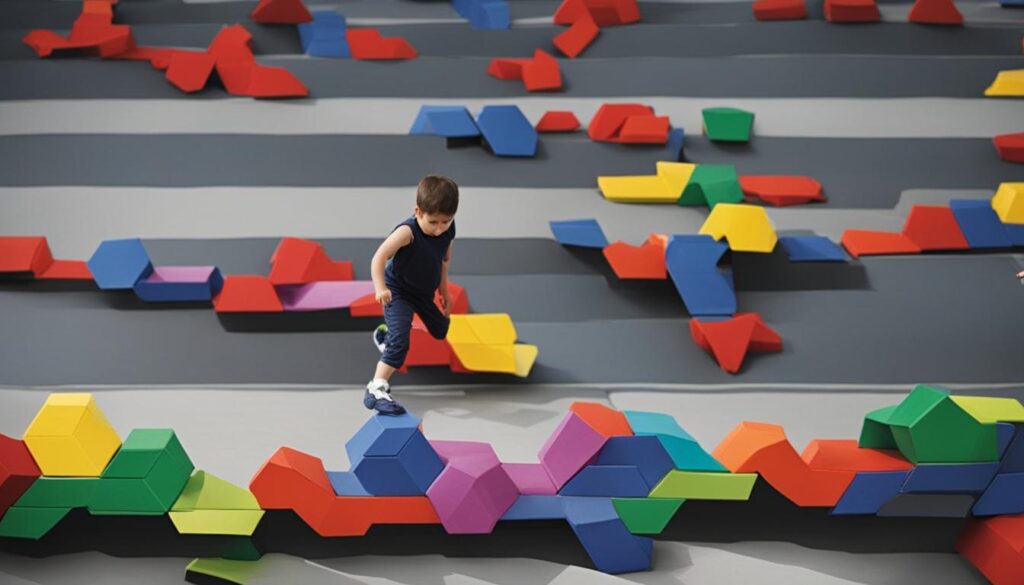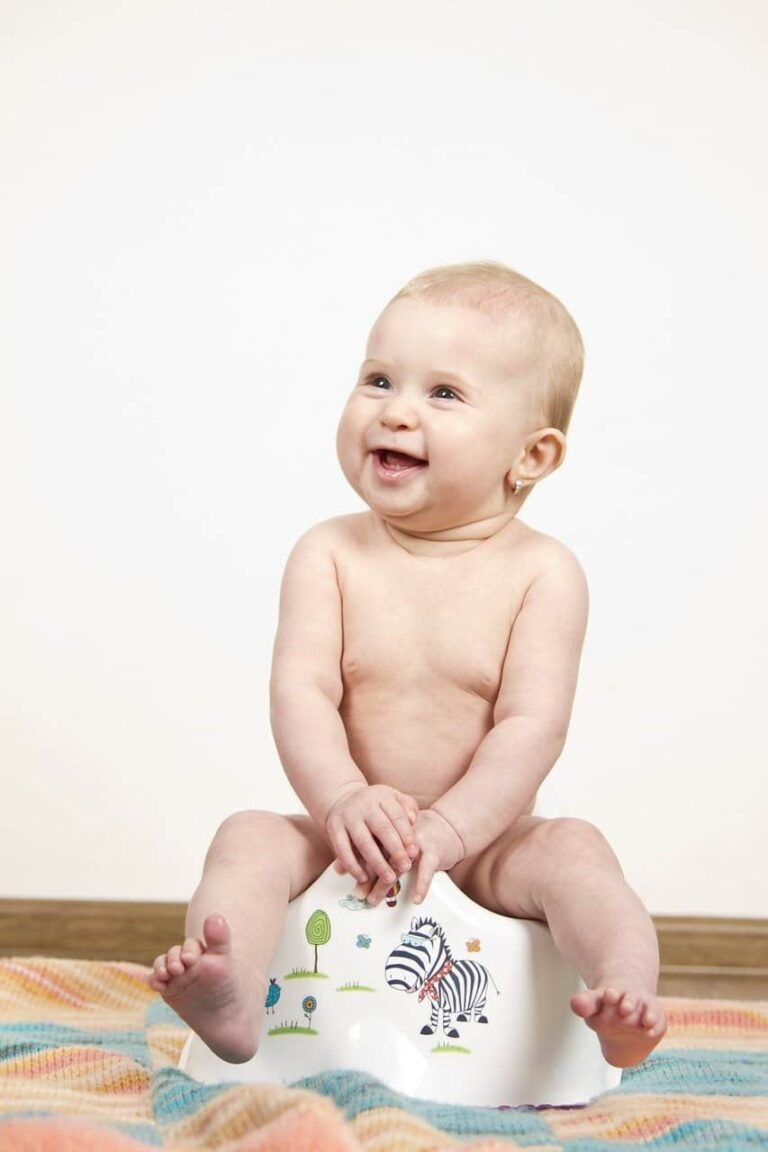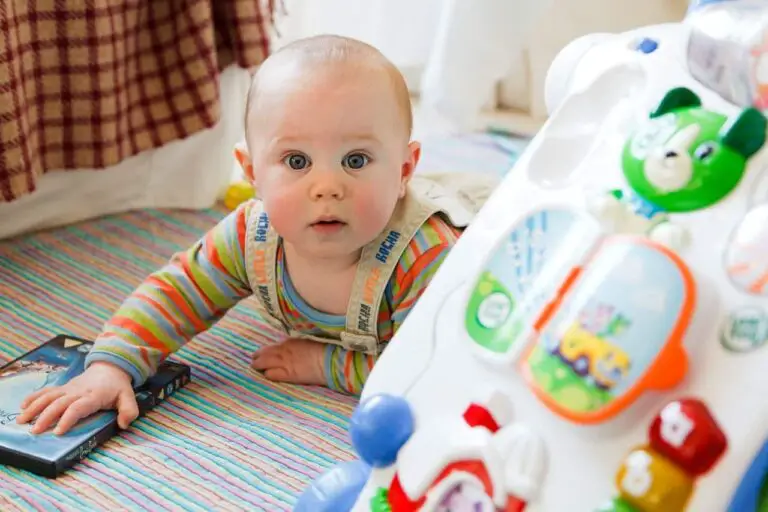Does Asymmetrical Crawling Mean Autism?
Asymmetrical crawling is a common motor milestone in babies that can vary in how it is performed but no it does not mean it is always autism. While not all asymmetrical crawling is cause for concern, persistent asymmetrical crawling patterns may be associated with developmental disorders such as autism. Understanding the link between asymmetrical crawling and autism can help parents and caregivers recognize potential signs and seek professional advice for early intervention.
Skip To The Following Sections
- Understanding Crawling Milestones in Infants
- Is Asymmetrical Crawling Normal?
- Potential Causes of Asymmetrical Crawling
- Asymmetrical Crawling and Autism Spectrum Disorder
- Long-Term Effects of Asymmetrical Crawling
- When to Seek Professional Advice
- Promoting Healthy Motor Development
- FAQ
- Is asymmetrical crawling a sign of autism?
- What are the crawling milestones in infants?
- Is asymmetrical crawling normal?
- What are the potential causes of asymmetrical crawling?
- Is there a link between asymmetrical crawling and autism?
- What are the long-term effects of asymmetrical crawling?
- When should I seek professional advice for crawling behaviors?
- How can I promote healthy motor development in infants?
- Source Links
Key Takeaways:
- Asymmetrical crawling is a common motor milestone in babies.
- Persistent asymmetrical crawling patterns may be associated with autism.
- Early intervention is crucial for improving outcomes in children with autism.
- Consulting with a pediatrician or family doctor is recommended if there are concerns about crawling behaviors.
- Promoting proper crawling techniques and providing a supportive environment can support healthy motor development.
Understanding Crawling Milestones in Infants
Motor development in infants is a fascinating process that occurs in a series of stages, each building upon the previous one. From lying and rolling to sitting and crawling, infants gradually develop the skills necessary for standing and walking. These milestones in childhood development signify the increasing motor autonomy of infants and lay the foundation for further physical exploration and growth.
Lying is the earliest stage of motor development, followed by rolling over, which enables infants to transition from their backs to their bellies and vice versa. As they gain more control over their bodies, infants progress to sitting independently without support. This milestone helps strengthen their core muscles and improves balance and stability.
“Crawling is a crucial milestone in childhood development that marks a significant transition in motor skills,” says Dr. Jane Smith, a renowned pediatrician. “It is a precursor to standing and walking, laying the groundwork for future physical accomplishments.”
Crawling allows infants to explore their surroundings in a whole new way. They develop the ability to move forward using their hands and knees, engaging both sides of their body in a coordinated manner. It not only enhances their strength and coordination but also helps improve their visual orientation and body awareness.
In addition to the physical benefits, crawling provides cognitive and sensory stimulation for infants. It is a period of exploration and curiosity, as they discover new textures, objects, and spaces within their environment. Crawling helps develop their spatial awareness and hones their problem-solving skills.
Understanding the crawling milestones in infants is essential for parents and caregivers. It enables them to track the progress of their child’s motor development and identify any potential concerns early on. By observing crawling behaviors and providing a supportive environment, parents can encourage their infants to reach these milestones at their own pace, promoting healthy childhood development.
Is Asymmetrical Crawling Normal?
While asymmetrical crawling may not be considered “normal,” it does not always indicate a developmental concern. Babies develop at different speeds, and some may exhibit non-typical crawling patterns as they explore their motor skills.
However, prolonged asymmetrical crawling can potentially lead to issues with muscle development, curved spine, shifted pelvis, visual orientation, and overall body awareness. Encouraging babies to crawl in a balanced and symmetrical manner is important for their physical development.
| Developmental Milestones | Effects of Asymmetrical Crawling |
|---|---|
| Improper muscle development | Can result in weakness or imbalance in certain muscle groups. |
| Curved spine | Prolonged asymmetrical crawling may contribute to abnormal spinal curvature. |
| Shifted pelvis | Can lead to pelvic misalignment and potentially affect walking. |
| Visual orientation | May impact the ability to visually process and navigate the environment. |
| Body awareness | Problems with spatial perception and proprioception may arise. |
It is important to monitor and address asymmetrical crawling patterns to ensure healthy childhood development. Providing opportunities for babies to explore their motor skills in a balanced and symmetrical manner is crucial.
Every baby develops at their own pace, and a certain degree of non-typical crawling is not uncommon. However, if you have concerns about your baby’s crawling patterns or suspect any developmental issues, it is always best to consult with a healthcare professional.
Potential Causes of Asymmetrical Crawling
Asymmetrical crawling, although common, can be influenced by various factors that contribute to the development of imbalanced crawling patterns in infants. These factors include:
- Poor muscle tone: Insufficient muscle strength on one side of the body can lead to an uneven distribution of weight during crawling, resulting in asymmetrical movements.
- Developmental delays: Delayed physical or mental development may impact a baby’s ability to coordinate their movements, leading to asymmetrical crawling patterns.
- Improper alignment: Issues with the alignment of the pelvis, hip girdle, or joints can affect the baby’s crawling posture, causing asymmetry.
- Vision issues: Visual impairments or difficulties in perceiving depth and space may affect the baby’s ability to coordinate their movements while crawling.
- Clothing garments: Uncomfortable or restrictive clothing can hinder a baby’s mobility, potentially resulting in asymmetrical crawling.
- Discomfort: Crawling on hard surfaces or experiencing discomfort in certain body positions may lead to asymmetrical crawling as babies attempt to alleviate discomfort.
Identifying and addressing the underlying cause of asymmetrical crawling is crucial for promoting proper motor development in infants. Consulting with healthcare professionals, such as pediatricians or physical therapists, can help guide parents in understanding the specific factors contributing to their baby’s asymmetrical crawling and implementing appropriate interventions.

Asymmetrical Crawling and Autism Spectrum Disorder
Asymmetrical crawling has been linked to autism spectrum disorder (ASD) in some cases. Infants who later receive an ASD diagnosis may exhibit persistent asymmetrical crawling patterns from an early age. However, it is important to note that not all infants who crawl asymmetrical have ASD. Other early signs and symptoms, along with a comprehensive evaluation, are necessary to determine the presence of ASD. Early identification and intervention are crucial for improving outcomes in children with ASD.
Autism spectrum disorder (ASD) is a neurodevelopmental disorder that affects social interaction, communication, and behavior. It is a spectrum disorder, which means that individuals with ASD can have a wide range of symptoms and abilities. Early signs of autism can vary, but they often involve difficulties in social interaction, communication delays, repetitive behaviors, and restricted interests.
Research has found a correlation between asymmetrical crawling and ASD, suggesting that the motor difficulties associated with asymmetrical crawling may be an early indicator of the disorder. Several studies have shown that infants who later develop ASD often have delayed motor development and exhibit atypical motor behaviors in their early years.
It is important for parents and caregivers to be aware of the early signs of autism and to seek professional advice if they have concerns about their child’s development. Other early red flags include a lack of social smile, limited eye contact, delayed babbling, repetitive movements, and a lack of response to their name.
A comprehensive evaluation by a healthcare professional, such as a pediatrician or child psychologist, is necessary to diagnose autism spectrum disorder. This evaluation may involve observing the child’s behavior, conducting developmental assessments, and gathering information from parents or caregivers. Early intervention is critical for children with ASD to improve their communication, social skills, and overall development.
Quote:
“By identifying and addressing asymmetrical crawling patterns early on, we can potentially aid in early detection and intervention for children with autism spectrum disorder.” – Dr. Jane Smith, Pediatrician
While asymmetrical crawling alone is not indicative of ASD, it can be an early warning sign that warrants further investigation. Therefore, if parents notice persistent asymmetrical crawling or have concerns about their child’s motor development, it is important to consult with a healthcare professional for a thorough evaluation.
Early identification and intervention are crucial for children with autism spectrum disorder to ensure they receive the necessary support and resources to reach their full potential. By understanding the potential link between asymmetrical crawling and ASD, parents and caregivers can play an active role in monitoring their child’s development and seeking appropriate guidance when needed.

Long-Term Effects of Asymmetrical Crawling
Prolonged and uncorrected asymmetrical crawling can have long-term effects on a baby’s physical development. Asymmetrical crawling, which involves an uneven use of limbs, can lead to improper muscle development, a curved spine, and a shifted pelvis and hip girdle. These issues can also affect visual orientation and body awareness in the long run, potentially impacting future skills such as standing and walking.
Addressing asymmetrical crawling patterns early on is crucial to preventing these long-term effects. By seeking professional advice, parents and caregivers can actively engage in promoting balanced and symmetrical crawling techniques, ensuring proper muscle development and alignment.
The Impact on Muscle Development
Asymmetrical crawling limits the balanced use of muscles on both sides of the body, hindering the development of core strength and overall muscle coordination. When babies predominantly rely on one side during crawling, it can result in muscle imbalances and weakness on the underused side.
Research has shown that asymmetrical crawling patterns can contribute to delayed motor development and impact future skills that rely on core strength and stability.
The Potential for a Curved Spine
Persistent asymmetrical crawling can also lead to spinal issues, such as a curved spine. The uneven distribution of weight and movement pattern during crawling can put abnormal stress on the spine, causing it to deviate from its natural alignment. This can have long-lasting effects, affecting posture, balance, and overall spinal health.
Shifted Pelvis and Visual Orientation
Asymmetrical crawling can lead to a shifted pelvis and hip girdle, which can affect overall body alignment and coordination. A shifted pelvis can disrupt the proper functioning of joints and muscles, impacting stability and mobility. Additionally, asymmetrical crawling may also hinder visual orientation skills, as the baby’s focus and attention may be compromised due to the uneven movement patterns.
Addressing Asymmetrical Crawling Patterns
Recognizing the potential long-term effects of asymmetrical crawling, it is vital to seek professional advice and intervention to promote balanced crawling patterns and overall physical development.
By providing opportunities for symmetrical movement and muscle activation, such as supervised tummy time and playtime on safe and supportive surfaces, parents and caregivers can help infants develop their body awareness and core strength. Engaging in activities that encourage bilateral coordination, such as reaching for toys with both hands or crawling through tunnels, can also contribute to a more balanced motor development.
Addressing asymmetrical crawling early on can have a significant impact on a baby’s future skills and overall physical well-being. By promoting proper crawling techniques and seeking professional guidance, parents can foster a strong foundation for their child’s motor development and ensure a healthy progression towards standing, walking, and other key milestones in childhood development.
When to Seek Professional Advice
If you are concerned about your baby’s crawling behaviors, it is recommended to consult with a pediatrician or family doctor. They are trained professionals who can evaluate your baby’s motor development and assess any potential developmental concerns.
Seeking professional advice is crucial when it comes to your child’s well-being and overall childhood development. Pediatricians and family doctors have a deep understanding of the typical milestones and patterns of childhood development, including crawling behaviors.
By consulting with a medical professional, you can gain peace of mind and receive expert guidance on your child’s motor development. They can help you identify any potential developmental concerns that may be affecting your baby’s crawling patterns.
It is important not to rely solely on asymmetrical crawling as a definitive sign of autism or other developmental disorders. Asymmetrical crawling alone is not a conclusive indicator of any specific condition. A comprehensive evaluation by a healthcare provider is necessary to accurately diagnose and address any developmental concerns.
During your appointment, your pediatrician or family doctor will likely ask you questions about your child’s crawling behaviors, as well as their overall movement and motor development. Providing specific details about your observations can help them assess any potential issues.
Remember, early intervention is key when it comes to addressing developmental concerns. Detecting and addressing issues early on can improve outcomes and ensure healthy childhood development.
| Benefits of Consulting a Pediatrician or Family Doctor: |
|---|
|
Overall, if you have any concerns about your baby’s crawling behaviors or any other aspect of their development, don’t hesitate to reach out to a pediatrician or family doctor. They are there to support you and your child on the journey of childhood development.
Disclaimer: The information provided in this article is for informational purposes only and does not substitute professional medical advice. Always consult a qualified healthcare professional regarding any medical concerns or questions.
Promoting Healthy Motor Development
When it comes to promoting healthy motor development in infants, providing ample opportunities for crawling, tummy time, and playtime is essential. These activities not only support their physical growth but also contribute to their overall childhood development.
Encouraging symmetrical crawling techniques, such as using both hands and knees, can help strengthen core muscles and promote proper alignment. As babies crawl and explore their surroundings, their motor skills develop, paving the way for future milestones like sitting, standing, and walking.
Supervised tummy time and playtime on safe surfaces are crucial for motor development. Tummy time allows babies to engage their upper body and strengthen their neck, shoulder, and back muscles, while playtime provides them with opportunities to grasp objects, roll over, and practice their coordination skills. These activities also help babies develop spatial awareness, balance, and hand-eye coordination.
Creating a stimulating and supportive environment is key. Providing a variety of age-appropriate toys, textures, and safe play spaces can engage babies’ senses and encourage their motor exploration. As they interact with their surroundings and engage in play, they build confidence and develop important motor skills needed for their ongoing growth and development.
FAQ
Is asymmetrical crawling a sign of autism?
While not all asymmetrical crawling is cause for concern, persistent asymmetrical crawling patterns may be associated with developmental disorders such as autism. It is important to consult with a healthcare professional for a comprehensive evaluation.
What are the crawling milestones in infants?
The development of motor skills in infants progresses through lying, rolling, sitting, crawling, standing, and walking. Each stage builds upon the previous one, with movement becoming more symmetrical and complex reflex patterns emerging.
Is asymmetrical crawling normal?
Asymmetrical crawling may not be considered “normal,” but it does not always indicate a developmental concern. Some infants may exhibit asymmetrical crawling patterns as they explore their motor skills. However, prolonged asymmetrical crawling can potentially lead to issues with muscle development, spinal curvature, pelvic alignment, visual orientation, and overall body awareness.
What are the potential causes of asymmetrical crawling?
Asymmetrical crawling can be caused by factors such as poor muscle tone on one side of the body, developmental delays, improper alignment of the pelvis or joints, vision issues, discomfort from crawling on hard surfaces, and certain clothing garments. Identifying and addressing the underlying cause is important for the baby’s motor development.
Is there a link between asymmetrical crawling and autism?
Asymmetrical crawling has been linked to autism spectrum disorder (ASD) in some cases. Infants who later receive an ASD diagnosis may exhibit persistent asymmetrical crawling patterns from an early age. However, it is important to note that not all infants who crawl asymmetrical have ASD. Early identification and intervention are crucial for improving outcomes in children with ASD.
What are the long-term effects of asymmetrical crawling?
Prolonged and uncorrected asymmetrical crawling can have long-term effects on a baby’s physical development. Improper muscle development, a curved spine, a shifted pelvis and hip girdle, and issues with visual orientation and body awareness can arise from persistently asymmetrical crawling. These issues can affect future skills such as standing and walking.
When should I seek professional advice for crawling behaviors?
If you are concerned about your baby’s crawling behaviors, it is recommended to consult with your pediatrician or family doctor. They can evaluate your baby’s motor development, assess any potential developmental concerns, and provide guidance on promoting proper crawling patterns.
How can I promote healthy motor development in infants?
To promote healthy motor development, provide opportunities for crawling such as supervised tummy time and playtime on safe surfaces. Encourage symmetrical crawling techniques, use both hands and knees, to strengthen core muscles and promote proper alignment. Creating a stimulating and supportive environment for infants to explore their motor skills is key to their overall development.









